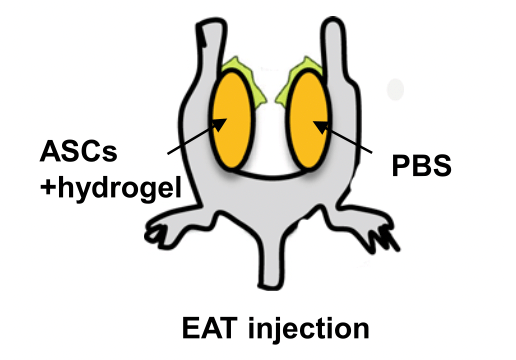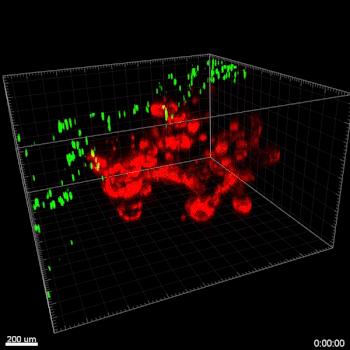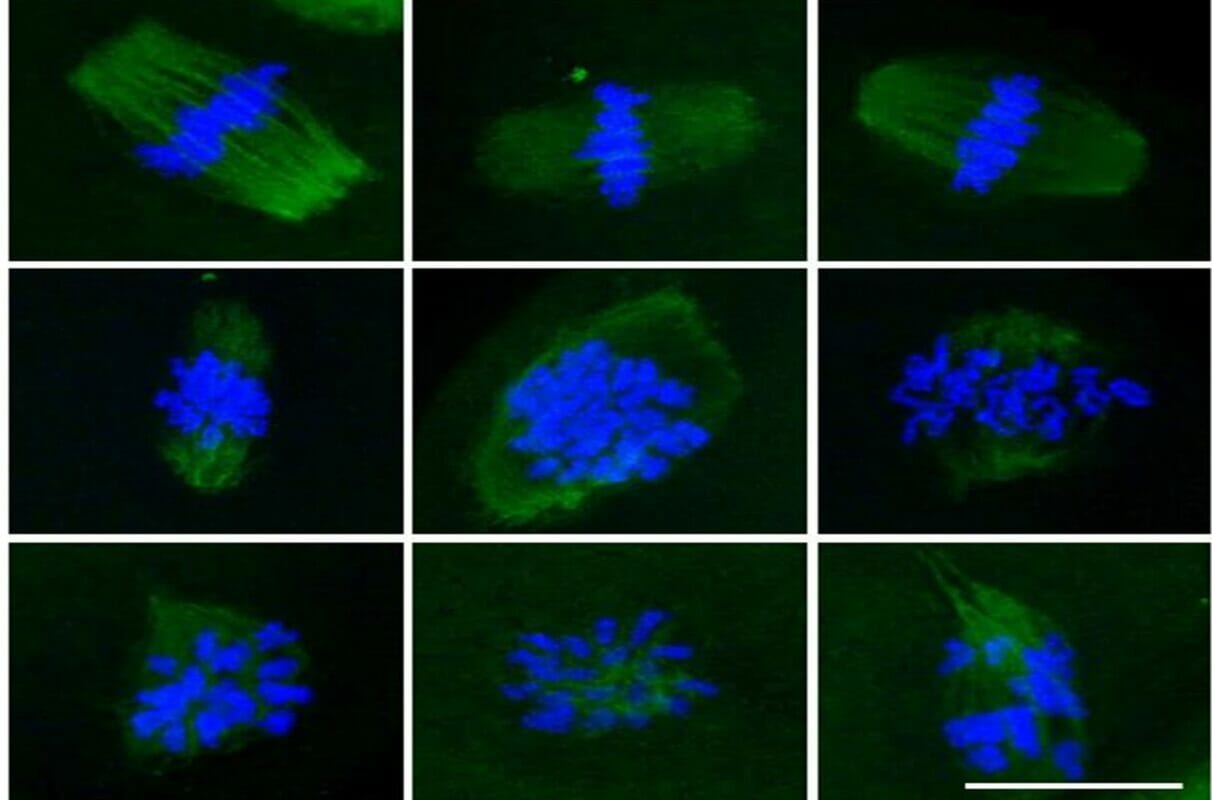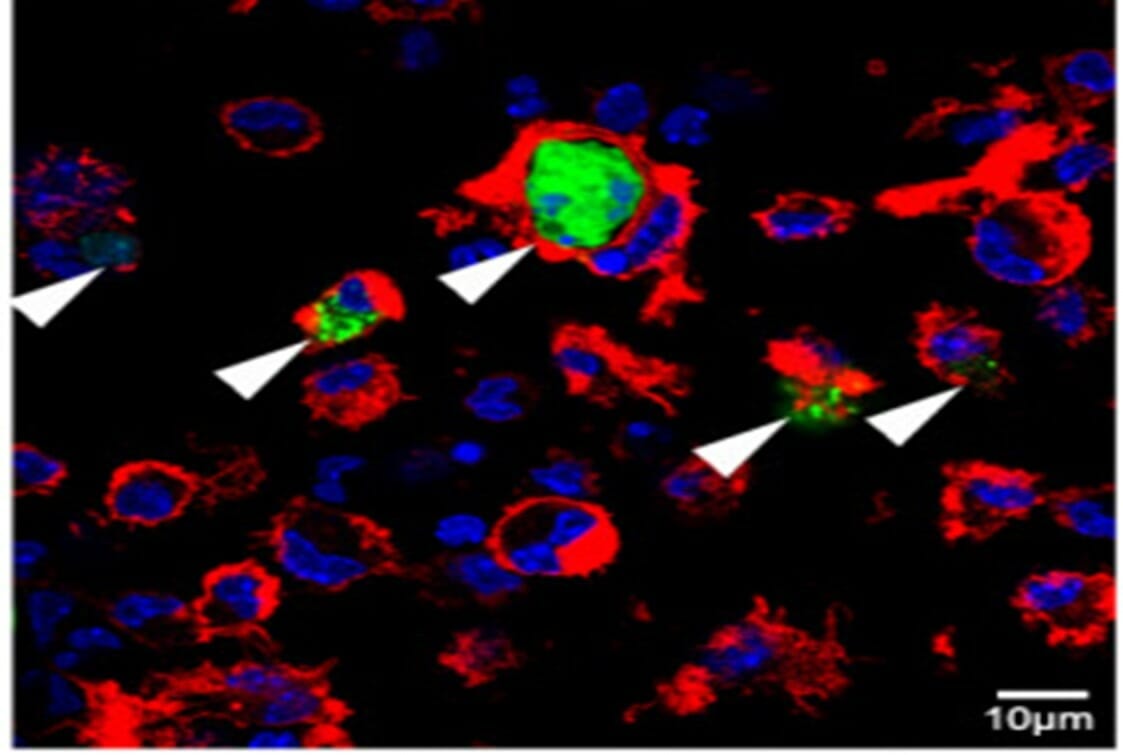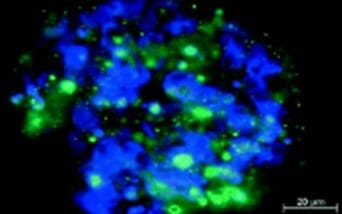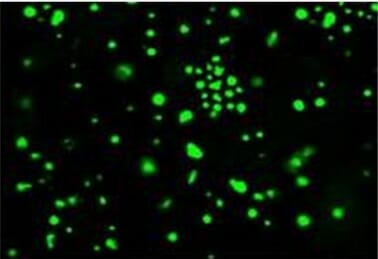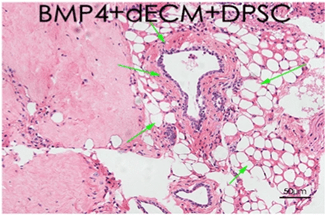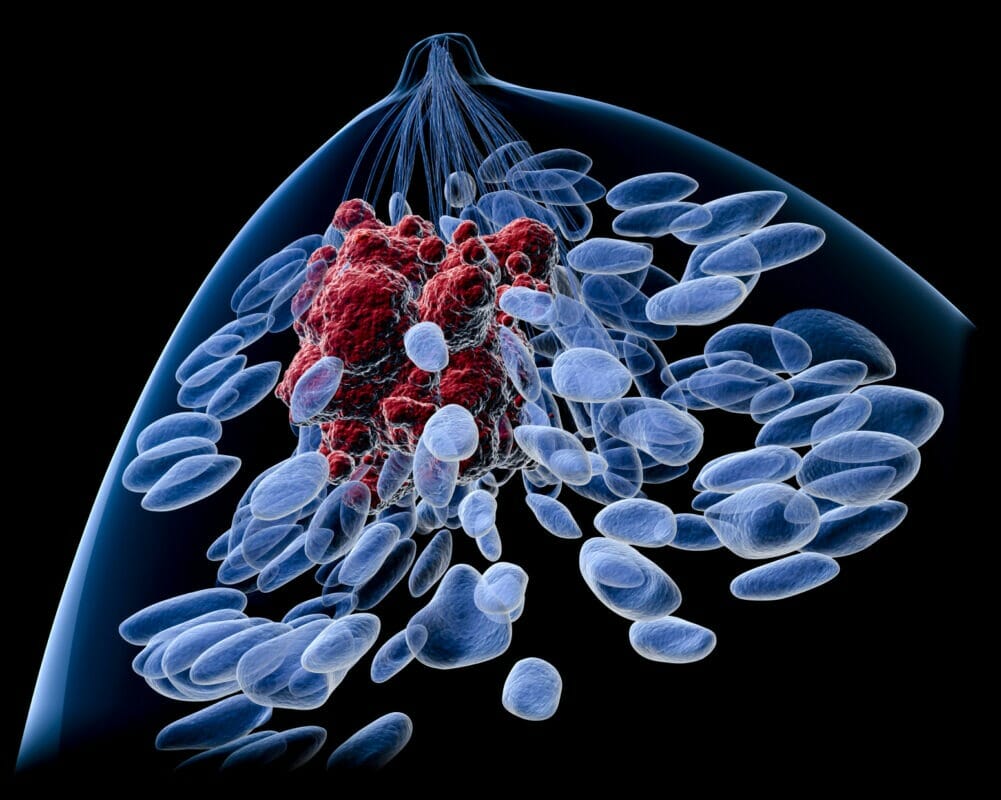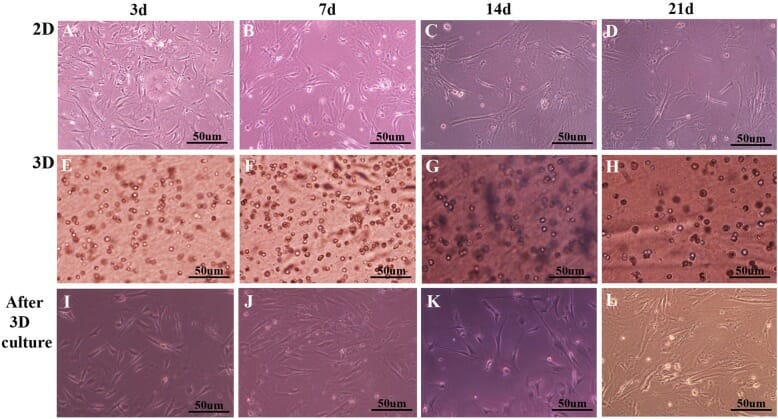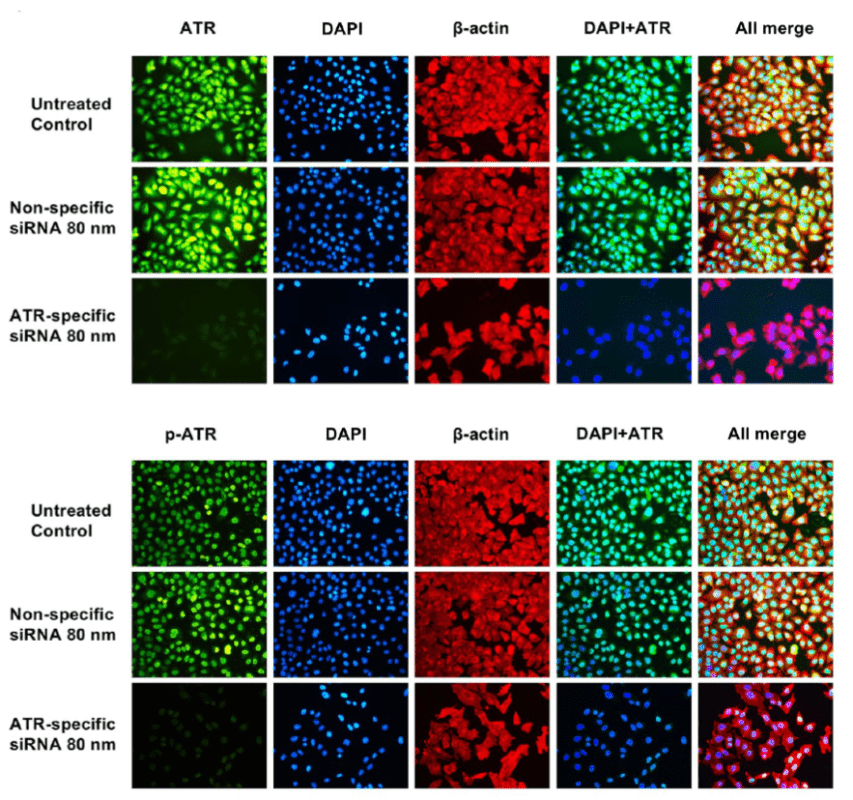Institution: Southwest Medical University, Luzhou, Sichuan, China Team: Zhu L., Feng Z., Shu X., Gao Q., Wu J., Du Z., Li R., Wang L., Chen N., Li Y., Luo M., and Wu J. Application: In vivo implantation of adipose stem cells to ameliorate glucose intolerance in obese mice Disease Model: Type 2 Diabetes Hydrogel: VitroGel® […]
Category Archives: Research Highlights
Institutions: Department of Microbiology and Cell Biology, Montana State University, Bozeman, MT, United States Team: Michelle D. Chergne, Barkan Sidar, T. Andrew Sebrell, Humberto S. Sanchez, Kody Heaton, Francis J. Kassama, Mandi M. Roe, Andrew B. Gentry, Connie B. Chang, Seth T. Walk, Mark Jutila, James N. Wilking, and Diane Bimczok Application: A Synthetic Hydrogel, […]
Institutions:Korea Institute of Radiological and Medical Sciences, Seoul, South Korea; Radiological and Medico-Oncological Sciences, University of Science and Technology, Daejeon, South Korea; Department of Integrative Biotechnology, Sungkyunkwan University, Suwon, South Korea; New Drug Development Center, Daegu-Gyeongbuk Medical Innovation Foundation, Daegu, South Korea; Center for Medicinal Chemistry, Korea Research Institute of Chemical Technology, Daejeon, South Korea […]
Institutions: Tianjin Medical University, Tianjin, China; Guangdong Pharmaceutical University, Guangzhou, China; University of Texas Southwestern Medical Center, Dallas, Texas, USA. Team: Xi q., Zhang J., Yang G., Zhang L., Chen Y., Wang C., Zhang Z., Guo X., Zhao J., Xue Z., Li Y., Zhang Q., Da Y., Liu L., Yao Z., and Zhang R. Application: […]
Institution: Department of Life Sciences and Public Health, Catholic University of the Sacred Heart, Milan, Italy Team:De Donato M., Babini G., Mozzetti S., Buttarelli M., Ciucci A., Arduini G., De Rosa M. C., Scambia G., Gallo D. Application:Discovery of KLF7, a novel biomarker and therapeutic target for high-grade serous ovarian cancer Disease Model:Ovarian Cancer Hydrogel:VitroGel® […]
Institution: Department of Clinical Pathology, Faculty of Veterinary Medicine, University of Tehran, Tehran, Iran Team:Babazadeh S., Nassiri S. M., Siavashi V., Sahlabadi M., Hajinasrollah M., and Zamani-Ahmadmahmudi Z. Application:Identification of a new role for MSC-derived CXCL12 in M2 phenotypic switching of macrophages, affecting tumorigenesis in breast cancer cells Disease Model:Breast Cancer Hydrogel:VitroGel® RGD Studies over […]
Institution: Stomatological Hospital of Chongqing Medical University, Chongqing Medical University. People’s Republic of China Team: Tan Q., Cao Y., Zheng X., Peng M., Huang E., and Wang J. Application: Identification of a novel synergistic relationship between BMP4 and dECM to accelerate pulp-like tissue formation by DPSCs in vitro Disease Model: Dental pulp stromal cells Hydrogel: […]
Institution: Precision Medicine Research Center, Seoul National University Team: Pang, K., Park, J., Ahn, S. G., Lee, J., Park, Y., Ooshima, A., Mizuno, S., Yamashita, S., Park, K.-S., Lee, S.-Y., Jeong, J., Ushijima, T., Yang, K.-M., & Kim, S.-J. Application: Targeting Vimentin to suppress metastasis breast cancer Disease Model: Breast Cancer Hydrogel: VitroGel® 3D Among […]
Institution: Cancer Center at the First Hospital of Jilin University Team: Qiliang Yin, Na Xu, Dongsheng Xu , Mingxin Dong, Xiumin Shi, Yan Wang, Zhuo Hao, Shuangshuang Zhu, Donghai Zhao, Haofan Jin, and Wensen Liu Application: In vitro models of adipose-derived mesenchymal stem cells Disease Model: Adipose-derived mesenchymal stem cells (ADMSCs) Hydrogel: VitroGel® RGD In recent […]
Institution: The First Affiliated Hospital of Zhengzhou University David Geffen School of Medicine at UCLA Team: Wenlong Feng, Dylan C. Dean, Francis J. Hornicek, Jinglu Wang, Yanyan Jia, Zhenfeng Duan, and Huirong Shi Application: Studying the relationship of ATR and p-ATR in 3D ovarian cancer models Disease Model: Ovarian Cancer Cell Lines Hydrogel: VitroGel® 3D […]

